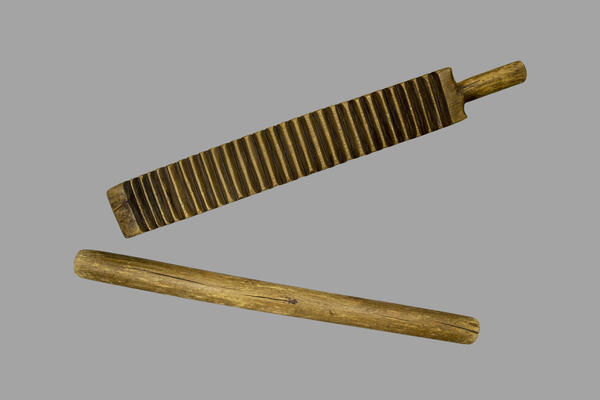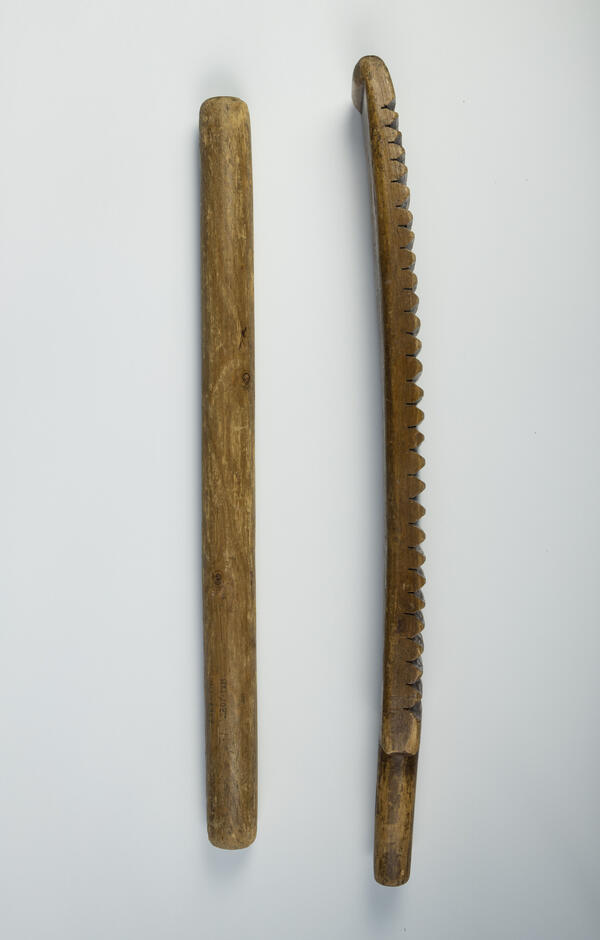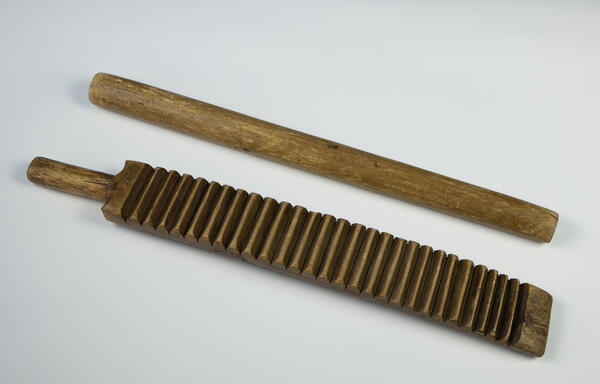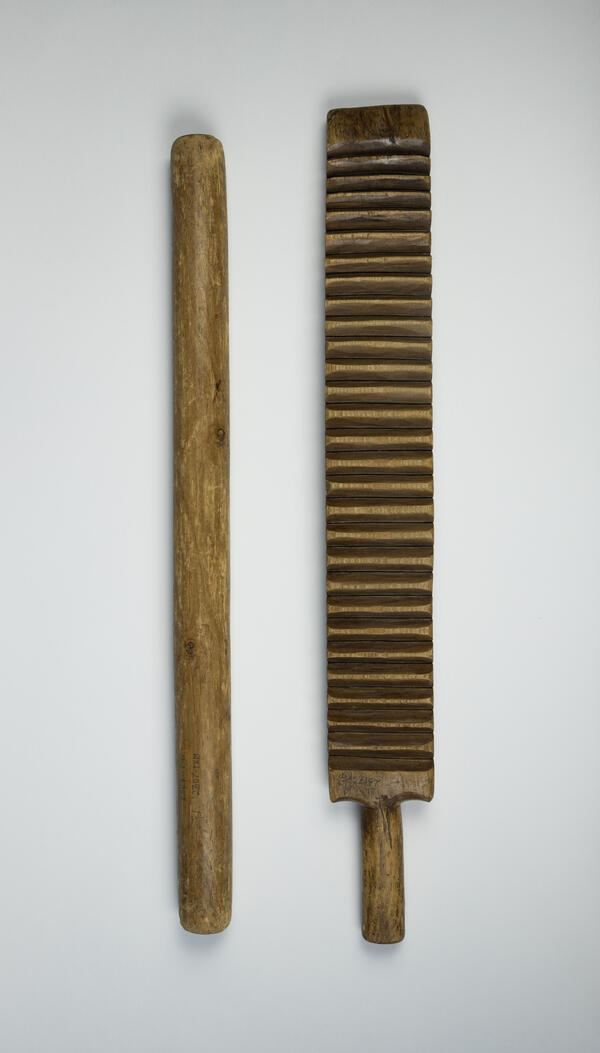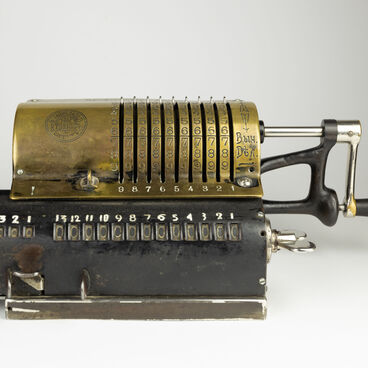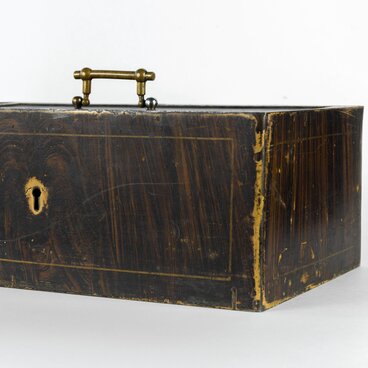A rubel and roller are household items for “ironing” laundry after washing. The exhibits of the Glazov Museum of Local Lore were in use in the Glazovsky District of the Vyatka Governorate at the turn of the 20th century. Similar devices for ironing clothes were used until the 1940s, when cast-iron irons became widely available.
A rubel is a flat, elongated rectangular wooden board with a short, rounded handle. Transverse grooves are made on its inner surface. They help to smooth out the fabric when rolling it. A rubel was also used in leather manufacturing and making felt boots. The wooden roller was an auxiliary tool.
In order to iron clean linen, housewives folded it along the width of the roller and carefully gathered it into a tight bundle. They placed the rubel on top and rolled it back and forth many times, smoothing out the fabric. It was a very laborious and physically demanding process that required considerable time. The method was so effective that even poorly washed laundry became cleaner after rolling. Hence the famous Russian proverb appeared, “If you can’t wash it, roll it” which means to accomplish something one way or another.
The fabric did not become smooth, as it is customary today, but the rubel softened it and made it feel good on the skin. This was especially necessary for clothing made of coarse linen.
Most often, the rubel was made of hardwood — oak, rowan, maple, and birch. The wood was processed to obtain the desired shape, and a handle was attached to one end. Sometimes it was made hollow and dried peas or pebbles were placed inside, so that when working the tool rattled and drove evil spirits out of the house. Some craftsmen decorated the rubel with exquisite carved floral ornaments or silhouettes of a horse — a symbol of labor. The shape of the rubel and its décor slightly varied in neighboring regions.
Often wooden utensils featured small notches to mark that it belonged to a specific clan or a family. Such markings could be found on beehives, bast shoes, baskets, barrels, shovels and rakes. The rubels were traditionally given by men to their wives, daughters and sisters as gifts.
A rubel is a flat, elongated rectangular wooden board with a short, rounded handle. Transverse grooves are made on its inner surface. They help to smooth out the fabric when rolling it. A rubel was also used in leather manufacturing and making felt boots. The wooden roller was an auxiliary tool.
In order to iron clean linen, housewives folded it along the width of the roller and carefully gathered it into a tight bundle. They placed the rubel on top and rolled it back and forth many times, smoothing out the fabric. It was a very laborious and physically demanding process that required considerable time. The method was so effective that even poorly washed laundry became cleaner after rolling. Hence the famous Russian proverb appeared, “If you can’t wash it, roll it” which means to accomplish something one way or another.
The fabric did not become smooth, as it is customary today, but the rubel softened it and made it feel good on the skin. This was especially necessary for clothing made of coarse linen.
Most often, the rubel was made of hardwood — oak, rowan, maple, and birch. The wood was processed to obtain the desired shape, and a handle was attached to one end. Sometimes it was made hollow and dried peas or pebbles were placed inside, so that when working the tool rattled and drove evil spirits out of the house. Some craftsmen decorated the rubel with exquisite carved floral ornaments or silhouettes of a horse — a symbol of labor. The shape of the rubel and its décor slightly varied in neighboring regions.
Often wooden utensils featured small notches to mark that it belonged to a specific clan or a family. Such markings could be found on beehives, bast shoes, baskets, barrels, shovels and rakes. The rubels were traditionally given by men to their wives, daughters and sisters as gifts.

